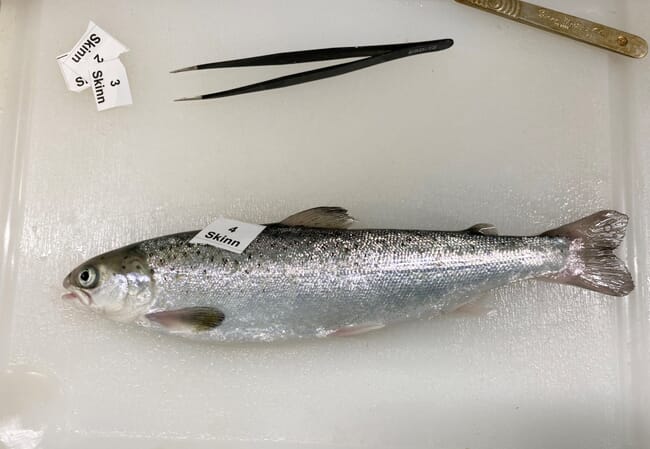
© Bjørn Erik Larsen, Nofima
So conclude researchers from Nofima, after trials showed that smolts fed diets containing krill will gain weight more quickly than control fish after transfer from a hatchery.
The trials were undertaken in cooperation with the krill producer Rimfrost, which provided OlyPep, a hydrolysed protein made from Antarctic krill (Euphausia superba).
“In our experiments we observed that the relatively small quantities of hydrolysed krill added to the feed produced great results. We noticed that the smolt quickly start feeding and we saw a greater increase in weight. Larger, more robust fish can quickly improve the economic situation of fish farmers,” says Dr Sissel Albrektsen, a senior researcher at Nofima.
Feed formulation
Two different methods were used for adding hydrolysed krill to smolt feed: either adding it before the extrusion process or as a top coating on ready-made feed pellets.
Hydrolysed krill added as a top coating resulted in smolt growth more than doubling when compared to those fish which were fed a control diet during their first six weeks in the sea, with smolts attracted by the water-soluble compounds coating the pellets. Twelve weeks after being released into the sea, these fish weighed 130 g more than the fish in the control group.
The feed that had hydrolysed krill added before extrusion also resulted in substantially higher feed intake and growth when compared to the control diet, but the effects were less marked than those achieved by top-coating.
Some slight differences were found in the digestibility of amino acids, where feed top-coated with hydrolysed krill produced the best results, but this does not explain the major differences in growth. Hydrolysed krill counteracts the development of fatty liver disease, indicating that the nutrients are effectively converted in the fish.

© Sissel Albrektsen, Nofima.
Health benefits
At the end of the experiment, the researchers noted higher occurrences of scale loss and skin damage in the control group compared to the fish which received hydrolysed krill in their feed. This could have implications for the robustness and health of the fish, so the researchers wanted to take a closer look.
“By using an advanced fish skin analysis tool in a follow-up experiment... we found fewer incidences of injuries and dark pigments in the skin of fish which had hydrolysed krill in their feed. This shows that fish which eat and grow well develop thicker skin at an earlier stage compared to fish that start feeding at a later stage. Better quality fish skin means more robust fish, which are less prone to injury and disease. Addition of krill hydrolysate can help to improve fish health and the economic situation of fish farmers,” said Dr Albrektsen.




